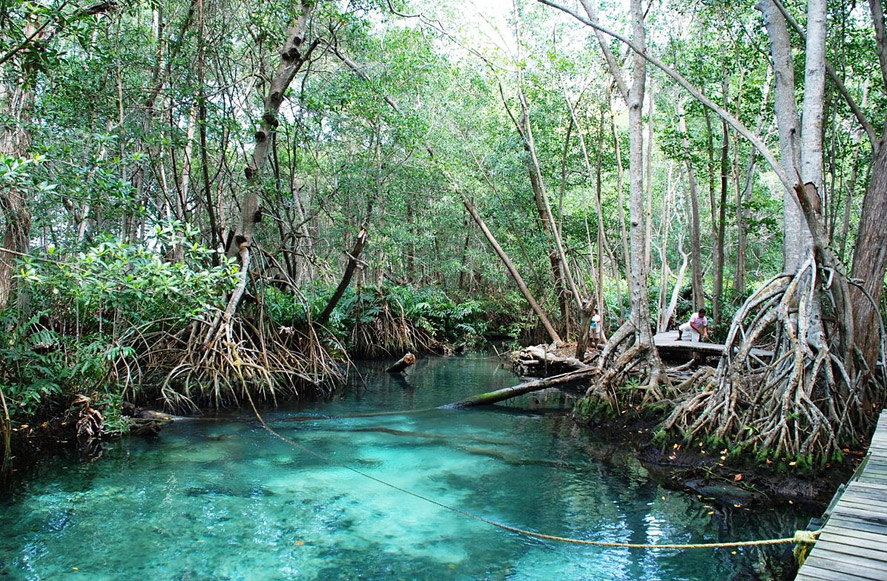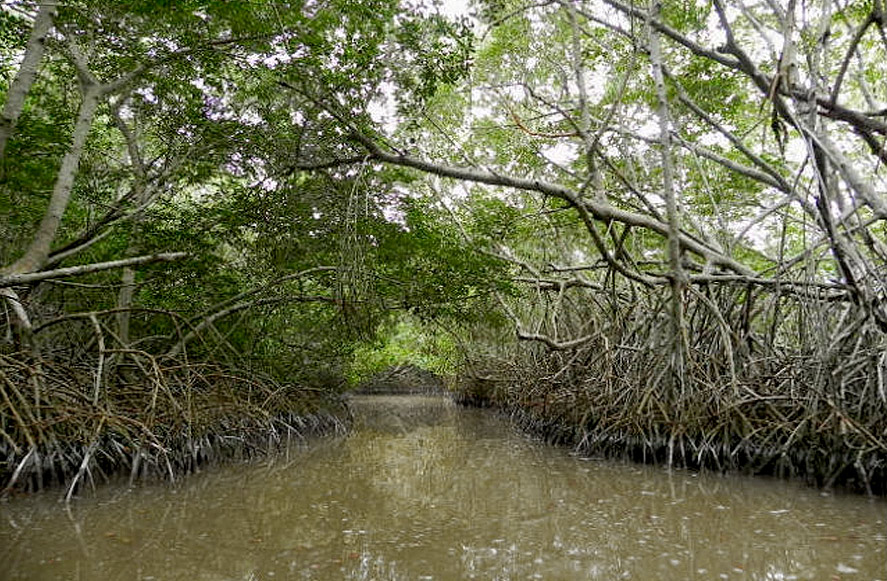
- Date: 29/05/2023
Jaltún y Dzinitún, two small parks to experience nature in a big way
Yucatan is undoubtedly a land of natural bounty, the vast biodiversity of its flora and fauna is no less surprising than the geography that this beautiful state awakens in national and international tourists.
Two of the ecological parks that receive the most visits are Jaltún and Dzinitún, which shows the trend in the interest of travelers to be more and more in touch with nature, and that is precisely what these parks offer, nestled in the entrance of the Celestun Biosphere Reserve.
Jaltún, where water comes alive in a thousand ways
Jaltún or sarteneja is the name of a water tank that is between stones, that can be natural or artificial and are of great importance for the preservation of fauna, in Jaltún de Celestún the most incredible natural sarteneja has been formed that is part of the wetlands of the Celestun Reserve. This place offers its visitors canoe and kayak tours through its canals, while the flora and fauna of the place are known as the “black hawk”, the “chopped lizard” and the iguanas; but you can also practice various activities with family or friends such as land and water hiking, camping and snorkeling.
What is unmissable in Jaltún?
- Rowing through its six interconnected artificial ponds
- Visit the crocodile farm
- Let the little ones have fun in the wading pool
- Visit the botanical garden and get to know the orchid
- Take a selfie by carrying a baby crocodile or a viper
- Swimming in the natural pool

Dzinitún, the tranquility that hypnotizes
The Dzinitún ecotourism park, located at the entrance of Celestún, has a tunnel formed naturally by the trees of the mangroves that you can cross in canoes or kayak. Although the flamingo colonies that can be seen from December to
February are the most charismatic and representative fauna of these places, they have classified more than 300 species of birds and a large number of fish, many of them endemic to the region such as the tiger herons, the “blue ones”, the “pico de bote” and the San Martín fisherman.
Other species such as raccoons and ocelots are walking along some bicycle paths and in the depth of the mangroves some crocodiles can be seen, although it is important to consider that they are nocturnal.
What is unmissable in Dzinitún?
- Tour the four types of mangroves: red, white, black and buttonwood
- Pass through the 800-meter long tunnel
- Know the petrified forest
- Swimming in the Dzul Ha water hole
- Crocodile sighting
- It is worth paying for your tour to be long and include fishing
Practical advice to visit these ecotourism parks:
- Take a submersible camera of preference
- Bring biodegradable sunscreen
- Wear biodegradable mosquito repellent, lotion, bracelets and incenses
- Do the tours very early to take full advantage of sunlight and time, we
- recommended spending the entire day
- Before deciding on a place to eat, ask about prices since they vary a lot
- Remember to bring a swimsuit, sunglasses and a hat
If you want more detailed information about the travel times, costs, itineraries and activities in Jaltún and Dzinitún please contact us.
